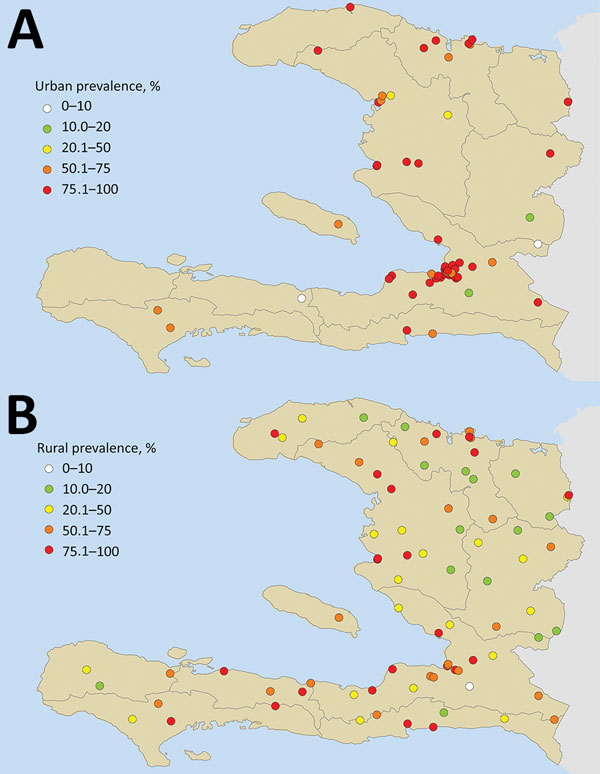Volume 24, Number 6—June 2018
Research
Use of Bead-Based Serologic Assay to Evaluate Chikungunya Virus Epidemic, Haiti
Figure 1

Figure 1. Urban (A) and rural (B) serosurvey sampling sites for chikungunya prevalence, Haiti, December 2014–February 2015. Geolocated point seroprevalence is shown as the percentage of the sampled population positive for chikungunya IgG.
Page created: May 17, 2018
Page updated: May 17, 2018
Page reviewed: May 17, 2018
The conclusions, findings, and opinions expressed by authors contributing to this journal do not necessarily reflect the official position of the U.S. Department of Health and Human Services, the Public Health Service, the Centers for Disease Control and Prevention, or the authors' affiliated institutions. Use of trade names is for identification only and does not imply endorsement by any of the groups named above.